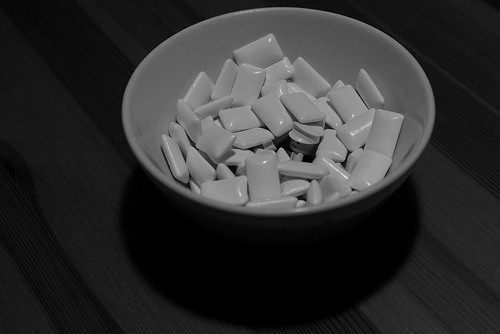Myths about Chewing Gums: Busted
Last Updated on January 30, 2015 by Guest Post
Getting to the Bottom of Chewing Gum Myths

thegrid.ch via Compfight cc
There are many people who chew gums on a regular basis and consider it to be something that’s extremely healthy for their teeth and gums. Well there are a lot of rumors that go around concerning chewing gums and oral health. We’re about to present the real facts concerning chewing gums and how it can affect your overall oral health.
Chewing sugar-free gum can actually work to prevent tooth decay and tooth mineralization. Tooth mineralization can leave harmful stains as well as work to start breaking down teeth by causing lesions throughout the month, chewing gum actually has more claims on it than any other food product available with the EFSA, this means that the product claims to have more benefits than just about any other food product available on the market today.
Sugar-free gum helps in mineralization, reduces oral dryness which increases saliva, which in turn can help to protect teeth and help us digest, as well as neutralize plaque acids. All of these acids and adversities can contribute to your overall oral health and by taking preventive measures such as chewing sugar-free gum occasionally can work at promoting a better oral health.
Saliva is a way in which we have evolved to protect our teeth and to help us digest our food. Saliva brings calcium, phosphate and a natural balance of pH inside our mouths which will help to keep us healthy and our teeth strong and clean.
Xylitol is a popular ingredient in many sugar-free gums. This ingredient works to sweeten gum without having to use sugar but also can work to promote dental health in gums. By reducing the amount of sugar content and harmful sweetener content in gum these types of intense sweeteners can provide health benefits and lower teeth to look whiter and cleaner as well because they are constantly being exposed to extra ingredients that are beneficial to overall oral health. Xylitol is especially beneficial when gum chewers are able to chew two or three pieces a day to provide cleaning directly after meals. Chewing after meal will work to clean teeth when you don’t have access to a toothbrush and can restore the natural pH balance in your mouth to prevent acid buildup which can eat away at tooth enamel.
Some types of sugar-free gum also provide whitening and cleaning along with their product. Some types of gum include fluoride, which works as a tooth whitening in cleaning agent. Many types of toothpaste contain fluoride as an active agent for cleaning and quite a few professional whitening sugar-free gums also contain fluoride today as well. With many different types of sugar-free gum available on the market it’s very important to choose carefully as different ingredients can provide certain health and cleaning benefits better than others.
If you would like more recommendations for sugar-free gum or for us to answer any other gum myths please contact Beach Braces for any questions you have about chewing gum and oral health.
Beach Braces 1730 Manhattan Beach Blvd. Suite B, Manhattan Beach, CA 90266
TEL: 310-379-0006 Fax: (310) 379-7051.
Myths about Chewing Gums: Busted
[super-post id=”sp54cc2d6da92a5″ title=”Related Posts” items=”5″ show_title=”true” title_length=”0″ title_ellipsis=”…” show_thumbnail=”true” remove_no_thumbnail=”false” icon_height=”40″ icon_width=”40″ icon_empty=”3612″ show_comments=”true” comment_icon=”https://www.beachbraces.org/wp-content/plugins/super-post/images/comments.png” show_date=”true” show_date_link=”true” date_icon=”https://www.beachbraces.org/wp-content/plugins/super-post/images/date.png” date_format=”F j, Y” show_author=”false” author_title=”View all posts by {author}” author_icon=”https://www.beachbraces.org/wp-content/plugins/super-post/images/author.png” show_category=”false” first_category=”true” category_separator=”, ” category_icon=”https://www.beachbraces.org/wp-content/plugins/super-post/images/category.png” offset=”0″ page_range=”5″ load_text=”Load more posts” query=”related” order=”DESC” post_status=”publish” title_trim=”words” load_style=”none” template=”left”]

Dr Patti Panucci attended the University of Louisville School of Dentistry for four years, where she graduated with a DMD degree (May 2000) among the Top 10 in her class. Following that, she headed west to Los Angeles to complete her three-year residency at one of the top-ranked orthodontic programs in the country – the University of Southern California.
Along with her certificate in orthodontics, Dr. Panucci earned a master’s degree in craniofacial biology. During those three years, she fell in love with Southern California beach life and decided that this was where her future lay.











Leave a Reply
Want to join the discussion?Feel free to contribute!